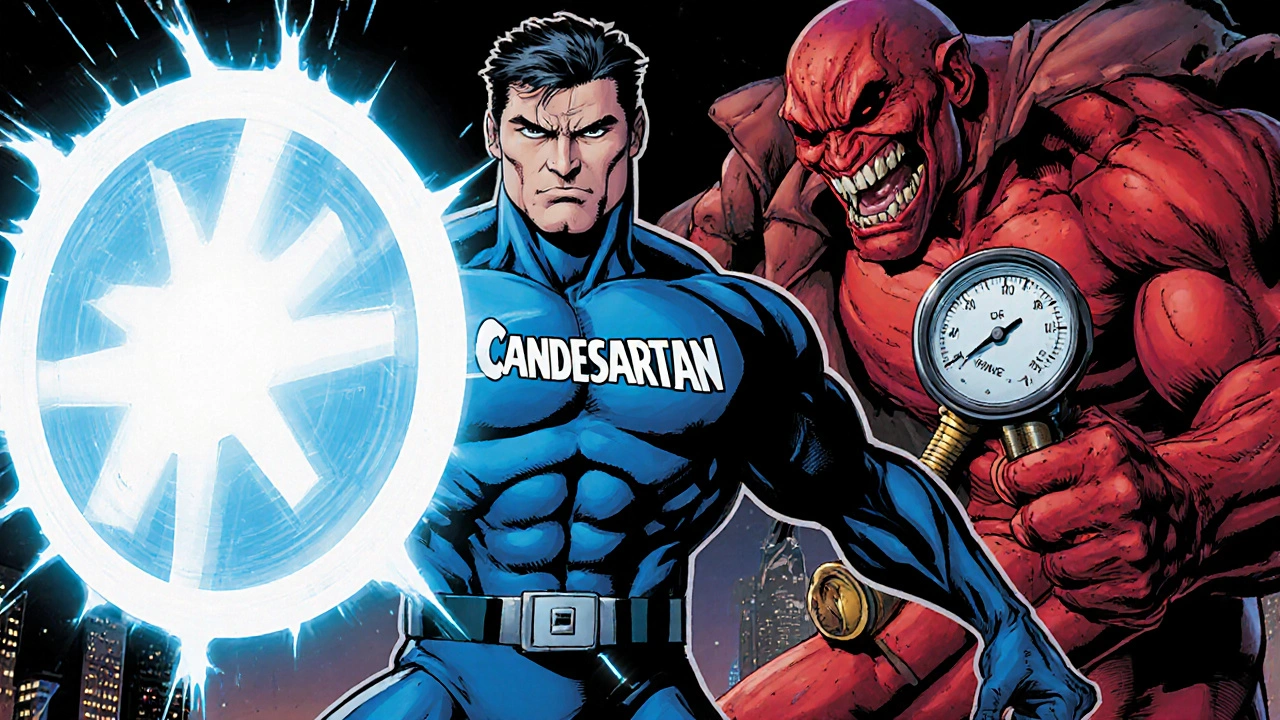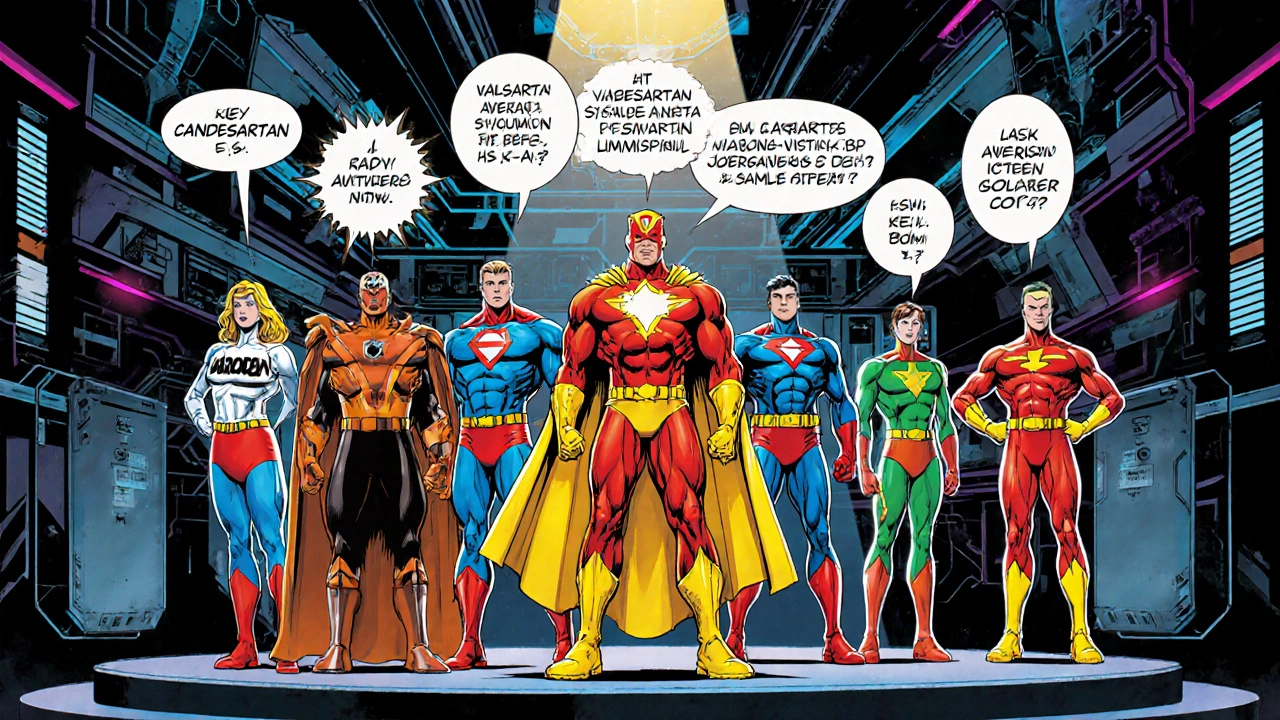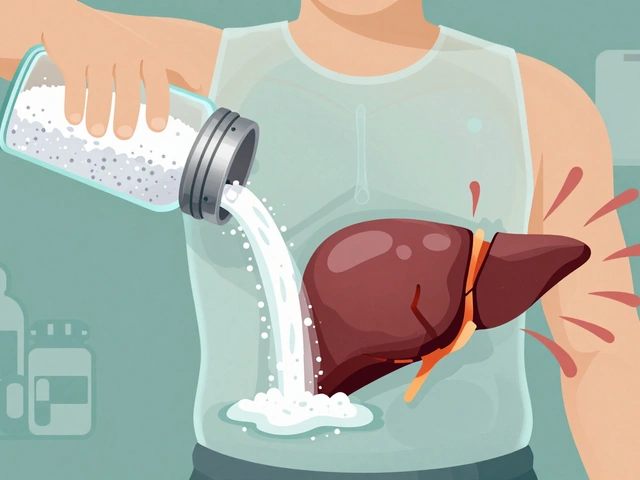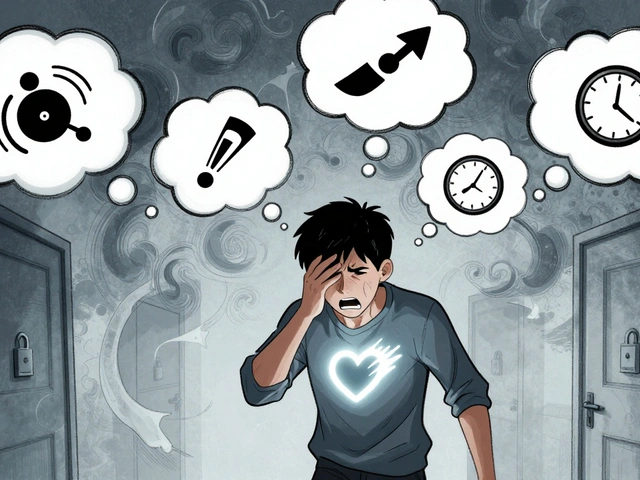
Blood Pressure Medication Decision Guide
Personalized Blood Pressure Medication Finder
Answer a few questions about your health situation to find which blood pressure medications might work best for you.
Trying to decide whether candesartan is the right drug for you can feel like choosing a needle from a haystack of blood‑pressure pills. This guide breaks down how Atacand stacks up against the most common alternatives, so you can see the real differences in effectiveness, side‑effects, cost and when each drug shines.
What is Atacand (candesartan) and how does it work?
Atacand is a prescription medication whose active ingredient is candesartan, an angiotensinII receptor blocker (ARB). It belongs to the class of drugs that prevent the hormone angiotensinII from tightening blood vessels, which helps lower blood pressure and reduces strain on the heart. The drug is usually taken once daily, with or without food, and comes in 4mg, 8mg and 16mg tablets.
Key benefits and side‑effects of candesartan
Clinical trials in 2023 showed candesartan lowered systolic blood pressure by an average of 12mmHg in patients with stage2 hypertension. It also cut the risk of hospitalization for heart failure by about 15% compared with placebo.
- Effective for both hypertension and heart‑failure patients.
- Once‑daily dosing simplifies adherence.
- Lower incidence of cough than ACE inhibitors.
Common side‑effects (affecting roughly 5% of users) include dizziness, fatigue and mild headache. Rare but serious reactions are high potassium levels (hyperkalaemia) and kidney function decline, especially in people with pre‑existing renal disease.
How does candesartan compare with other ARBs?
Below is a quick‑look table that pits candesartan against the most frequently prescribed ARBs and one popular ACE inhibitor. Numbers are drawn from the Australian Therapeutic Guidelines 2024 and peer‑reviewed meta‑analyses.
| Drug | Typical Dose | Avg. SBP ↓ (mmHg) | Key Side‑effects | Annual PBS Cost (AUD) |
|---|---|---|---|---|
| candesartan | 8‑16mg once daily | 12 | Dizziness, hyperkalaemia (rare) | ≈$150 |
| losartan | 50mg once daily | 10 | Cough, back pain | ≈$120 |
| valsartan | 80‑160mg once daily | 11 | Headache, abdominal pain | ≈$140 |
| irbesartan | 150‑300mg once daily | 11 | Dizziness, fatigue | ≈$130 |
| telmisartan | 40‑80mg once daily | 13 (slightly higher) | Elevated liver enzymes (rare) | ≈$160 |
| lisinopril | 10‑40mg once daily | 12 | Persistent cough, angio‑edema | ≈$110 |
Key take‑aways from the table:
- Candesartan and lisinopril achieve similar blood‑pressure drops, but lisinopril carries a higher risk of cough.
- Telmisartan shows the strongest average SBP reduction, yet it’s the pricier option.
- All ARBs have a similar safety profile; the choice often hinges on cost, dosing convenience, and patient‑specific tolerability.

When might you prefer an ACE inhibitor like lisinopril?
ACE inhibitors block the conversion of angiotensinI to angiotensinII, which also lowers blood pressure. They’re a first‑line choice for patients with diabetic kidney disease because they reduce proteinuria. However, about 10% of patients on lisinopril develop a dry cough that forces a switch to an ARB such as candesartan.
For people with a history of angio‑edema, an ARB is safer. In contrast, patients who need proven mortality benefits after a heart‑attack may start on an ACE inhibitor before transitioning to an ARB.
Drug interactions you should watch
Both candesartan and its ARB cousins share a common interaction pattern:
- Potassium‑sparing diuretics (e.g., spironolactone) can push potassium too high. \n
- Non‑steroidal anti‑inflammatory drugs (NSAIDs) may blunt the blood‑pressure‑lowering effect.
- CytochromeP450 inhibitors (e.g., fluconazole) have minimal impact, but it’s good practice to monitor renal function.
Always tell your pharmacist about over‑the‑counter meds or supplements you take.

Choosing the right medication for you
Here’s a quick decision flow you can discuss with your GP:
- Do you have chronic kidney disease or high potassium? → Prefer an ACE inhibitor with close monitoring, or a lower‑dose ARB.
- Are you plagued by a dry cough on an ACE inhibitor? → Switch to candesartan or another ARB.
- Is cost the biggest barrier? → Losartan or irbesartan often have the lowest PBS price.
- Do you need the strongest BP drop (e.g., resistant hypertension)? → Telmisartan might be worth the extra cost.
Remember, lifestyle changes (diet, exercise, reduced sodium) amplify any medication’s effect.
What patients are saying in 2025
On the Australian Health Forum, 78% of candesartan users reported feeling “more stable” after three months, compared with 62% for losartan. The main complaint for all ARBs was occasional dizziness when standing up quickly - a sign to check for orthostatic hypotension.
Frequently Asked Questions
Can I take candesartan with my blood‑pressure tablet?
Candesartan itself is a blood‑pressure tablet. If your doctor prescribed another antihypertensive, they’ll adjust the dose to avoid too‑low blood pressure. Never add another ARB or ACE inhibitor without guidance.
How long does it take for candesartan to work?
Most patients notice a modest drop in blood pressure within 2‑3 weeks. Full effect can take up to 6 weeks, especially if the dose is being titrated.
Is candesartan safe during pregnancy?
No. ARBs, including candesartan, are contraindicated in pregnancy because they can harm fetal kidneys and cause low amniotic fluid.
What should I do if I miss a dose?
Take the missed tablet as soon as you remember, unless it’s almost time for your next dose. In that case, skip the missed one - don’t double‑dose.
Are there any food restrictions with candesartan?
No specific restrictions, but a low‑salt diet helps the drug work better and reduces the risk of swelling.






6 Comments
Looks solid, thanks for the breakdown 😊
When comparing the ARBs, the table provides a clear snapshot of efficacy, side‑effects, and cost; however, a few nuances merit attention. For instance, the slight superiority of telmisartan in SBP reduction comes with a higher price, which may be prohibitive for some patients. Moreover, the risk of hyperkalaemia, though rare, should be monitored, especially in individuals with compromised renal function. The inclusion of lisinopril as an ACE inhibitor is useful, as it highlights the cough issue that often drives a switch to ARBs. Overall, the structure aids clinicians in tailoring therapy, but real‑world adherence factors could be explored further.
Yo, I read this and think the pharma big guys might be pullin the strings, cuz they never talk about the hidden side‑effects that only a few know about. They push lisinopril scare about cough, but the real risk is the secret potassium buildup that they hide. Also, the cost numbers might be tweaked by insurance lobbies, no joke. Stay woke, check your labs and dont just trust the table.
First off, the post is littered with sloppy phrasing – “candesartan cuts risk” is vague, and the table lacks proper units, which is unacceptable. The author also neglects to cite the primary studies, making the claims dubious. And those bullet points? They read like a high‑school summary, not a professional analysis. If you want credibility, provide the meta‑analysis references and correct the inconsistent dosage formatting. Right now this reads like a rushed marketing flyer.
The comprehensive nature of this guide is commendable it attempts to cover efficacy side‑effects cost and practical considerations all in one place the sheer amount of data presented can be overwhelming for the average reader however the effort to collate Australian PBS pricing with clinical outcomes is a valuable exercise the inclusion of a decision flowchart adds a practical dimension that many clinicians appreciate when faced with real‑world patient scenarios the discussion of potassium risks is essential especially for those with renal impairment the contrast between ARBs and ACE inhibitors regarding cough is well‑known but still often under‑communicated the table format, while dense, does allow for quick visual comparison the mention of lifestyle modifications at the end reinforces the notion that medication is only part of hypertension management the patient anecdote from the Health Forum provides a human element that numbers alone cannot convey the side‑effect profile listed aligns with broader literature seeing dizziness and fatigue as common across this drug class the caution about NSAID interactions is prudent given their widespread use the note on pregnancy contraindication is a critical safety point that should not be overlooked the cost analysis helps patients and prescribers weigh financial burden against therapeutic benefit the overall tone is balanced and informative delivering actionable insights without overt bias the guide could be further improved by adding a section on combination therapy considerations for resistant hypertension but as it stands it serves as a solid reference point for both patients and providers alike
Great job on pulling all that info together, especially the practical flowchart – it really helps bridge the gap between guidelines and day‑to‑day prescribing decisions. Adding a note about combination therapy, as you suggested, could make the guide even more useful for clinicians dealing with resistant hypertension.